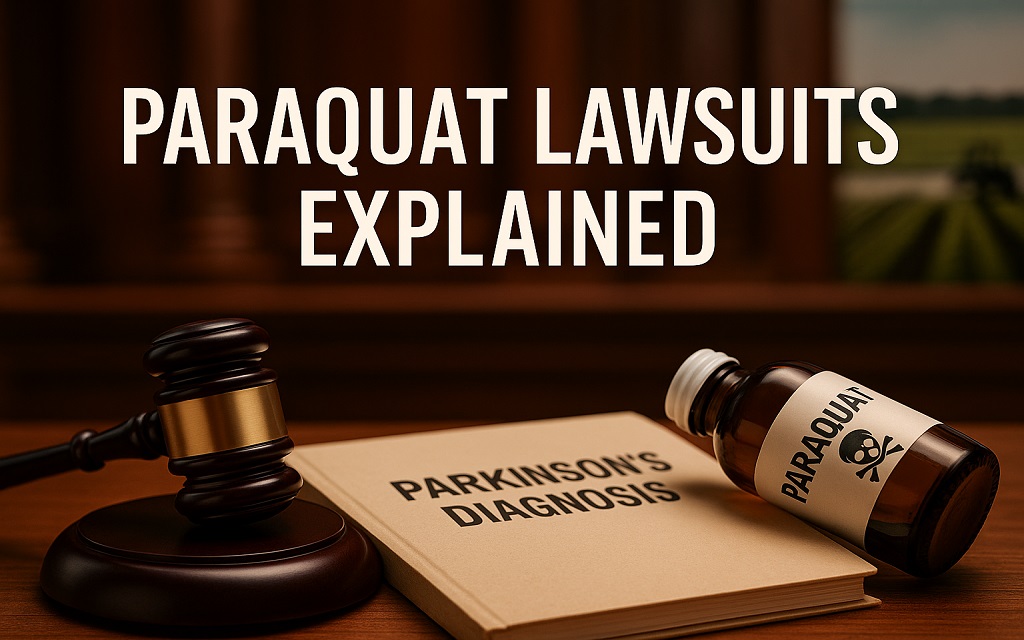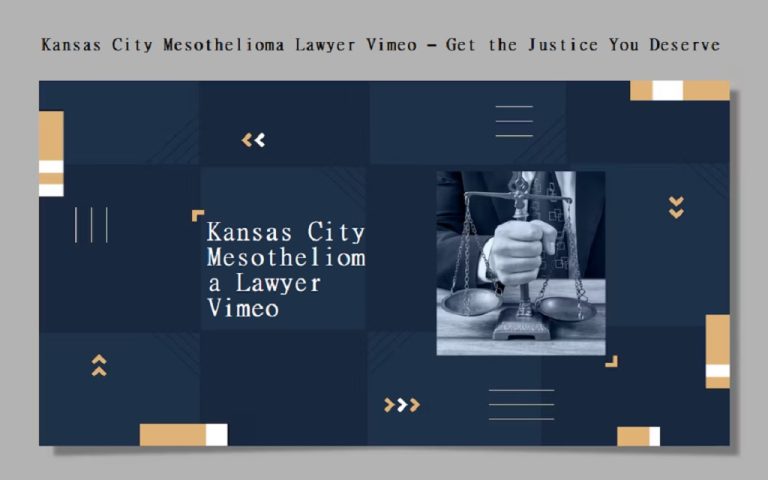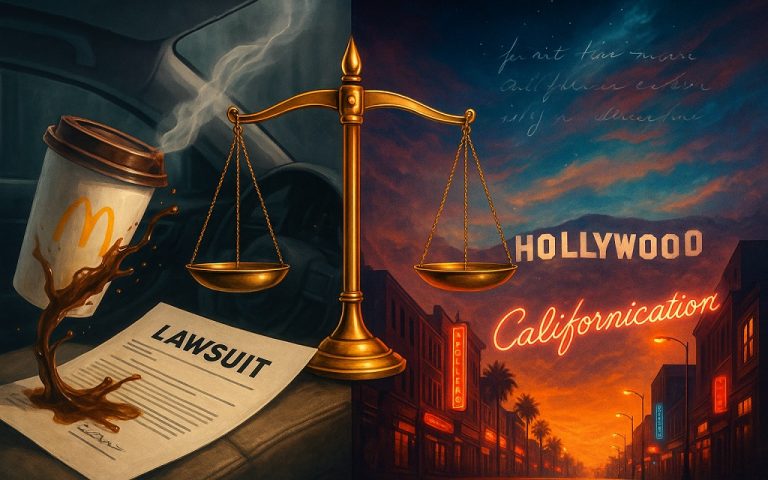For many years, paraquat has been utilised as a weed killer in the United States. It is currently the focus of significant legal actions. Many people think that Parkinson’s disease and other severe health problems were brought on by exposure to paraquat. This information might be helpful if you’re looking into your legal choices or are unsure about the settlement procedures in Paraquat Lawsuits.
What Is Paraquat?
Since the 1960s, the toxic insecticide paraquat has been used extensively in agriculture to manage unfamiliar plants and grasses. Commercial farmers choose it because of its quick-acting, non-selective properties, particularly in producing maize, soybeans, and cotton. However, the U.S. Environmental Protection Agency (EPA) has designated Paraquat as a “restricted use” pesticide because of its severe toxicity. This implies that it can only be handled lawfully by trained applicators.
Firestorm, Para-SHOT, and Gramoxone are some brand names under which Paraquat is marketed. There is no known counteragent, and even small doses can be lethal. Due to its health dangers, the chemical is prohibited in over 30 nations, including China and the European Union.
Why Is Paraquat Linked to Parkinson’s Disease?
Long-term exposure to Paraquat has been strongly linked to Parkinson’s disease, according to scientific investigations and a seminal research in the American Journal of Epidemiology, those who were exposed to Paraquat had a 2.5-fold increased chance of getting the illness.
Oxidative stress is thought to be the main culprit. The substantia nigra, the area of the brain afflicted by Parkinson’s disease, contains dopamine-producing neurones that can be destroyed by paraquat’s increased generation of reactive oxygen species. This injury might result in tremors, muscular stiffness, poor mobility, and balance problems.
Several studies conducted by organisations such as the National Institute of Environmental Health Sciences (NIEHS) support these conclusions. Despite mounting evidence, the EPA nevertheless permits its usage with some limitations.
Who Is Filing Paraquat Lawsuits?
Farmers, pesticide applicators, groundskeepers, and locals who lived close to farms where Paraquat was sprayed are filing lawsuits. Many were unaware of the dangers. Others assert that they utilized Paraquat without the proper protective gear because of inadequate label warnings or a lack of safety training.
These people claim that long-term exposure is directly responsible for their Parkinson’s diagnosis. Some also include family members in their claims, stating secondary exposure through clothing or household contamination.
Thousands of individuals have brought personal injury lawsuits nationwide. The majority of claims have been combined into a federal MDL, and the outcome of the early trials might determine whether there are large settlements.
What Do the Paraquat Lawsuits Claim?
Plaintiffs claim that Syngenta, Chevron, and other manufacturers:
- Knew of the risks associated with Paraquat exposure
- Failed to warn users adequately
- Marketed the product as safe when used as directed
- Did not provide adequate safety training or protective gear instructions
The lawsuits argue that internal company documents and independent studies show a long history of suppressed data. Some evidence suggests executives were aware of the Parkinson’s connection decades ago but did not act.
What Are the Current Settlement Amounts?
While no global settlement has been finalized, legal analysts predict potential settlement values based on other mass tort cases, such as Roundup and asbestos-related claims. Individual settlement values may vary depending on age, medical history, and the strength of evidence.
Estimated settlement tiers:
- Mild Parkinson’s disease: $30,000–$100,000
- Moderate progression: $100,000–$300,000
- Severe or advanced cases: $300,000–$1,000,000+
Several law firms suggest that top-tier cases, such as young victims with extensive exposure, could surpass $1 million in compensation. However, early settlements may influence future payouts as bellwether trial results become available.
What Is the Current State of the Paraquat MDL?
The Paraquat Multi-District Action (MDL) was created to improve efficiency and uniformity by combining federal actions in a single court. It is led by U.S. District Judge Nancy Rosenstengel and is based in the Southern District of Illinois.
As of early 2025, the MDL had over 5,000 plaintiffs. This number is expected to rise as more people learn about the possible link between Paraquat and Parkinson’s disease. Bellwether cases are now underway and will serve as benchmarks for jurors’ evaluations of the evidence.
If the plaintiffs win these test trials, the defendants could be convinced to settle the other cases. Alternatively, defense wins may result in lower settlement offers or dismissals.
What Is a Bellwether Trial?
Bellwether trials are selected cases meant to reflect the larger pool of lawsuits. These trials help both sides gauge risk and test legal arguments before a jury. The results are not legally binding in other cases but impact settlement talks.
For example, the defence could be more willing to negotiate larger settlements if a jury finds the plaintiff liable for substantial damages. Conversely, a defeat can result in drawn-out legal proceedings. Bellwether results are a typical stage of big MDLs, such as those involving opioids, talc, and Roundup.
Timeline of Paraquat Lawsuit
| Date | Event | Notes / Significance |
|---|---|---|
| June 1, 2021 | Early settlement by defendants (in part) | One of the first major settlement-fund payments (~US$187.5 million) by defendant companies to resolve some Paraquat claims. |
| August 2023 | Key Daubert hearing in MDL | Judges begin gatekeeping expert evidence in the MDL — important for causation disputes. |
| December 2024 | Several procedural developments: expert exclusions, discovery orders, first trial scheduled for March 2025 | The court excluded some plaintiff experts in related California cases and set up the first trial schedule. |
| February 3, 2025 | New cases added / number of active MDL filings reported at over ~5,800 | Documented growth in filings in the MDL. |
| April 14, 2025 | Joint statement filed indicating parties reached a settlement framework | Significant step: signals the likely structure for a large resolution of many cases. |
| May 1–June 1, 2025 | Case-count increases to ~6,159 active MDL cases by June 1 | Even amid settlement discussions filings continued to rise. |
| July-August 2025 | State court docket (e.g., Pennsylvania) surges to over 1,100 cases; settlement in one early state trial | State-court pressure builds; one Philadelphia case settled just before trial. |
| October 2025 | Stay on case‐specific deadlines extended in MDL and first bellwether trial set for October 14, 2025; second is scheduled for April 6, 2026 | The court pauses key deadlines while settlement negotiations continue; trial dates remain as leverage. Lawsuit Information Center |
| November 2025 | Case count in MDL reported at ~6,433 cases pending; settlement framework still not finalized | Latest publicly reported numbers and status: still waiting on final settlement. Drugwatch.com+1 |
What Proof Is Needed to File a Claim?
To support a Paraquat claim, plaintiffs generally need:
- A formal Parkinson’s diagnosis from a neurologist
- Proof of direct or secondary exposure to Paraquat
- Employment or location records showing proximity to spraying sites
Additional documentation can include affidavits from co-workers, pesticide application logs, and agricultural zoning maps. Expert testimony from neurologists and toxicologists is often required to support the medical link.
What’s the Time Limit for Filing?
Each state has a different deadline for bringing a Paraquat case. We refer to this as the statute of limitations. Plaintiffs must file within two to three years of learning or should have learnt that their sickness was related to Paraquat exposure in various jurisdictions.
Due to a discovery rule, the clock begins to run in certain states from the day of diagnosis. However, some have more stringent deadlines. As a result, it’s critical to contact a lawyer as soon as Parkinson’s disease is diagnosed.
Who Can Assist You in Making a Paraquat Claim?
Paraquat lawsuits are now being handled nationwide by mass tort litigation companies. These businesses work on a contingency fee basis, which means they only get paid if you win or settle the case, and frequently provide free consultations.
You should ask a prospective lawyer the following questions:
- How many cases have you litigated involving hazardous exposure?
- How have you found MDLs to be?
- Do you refer out or handle Paraquat instances directly?
Selecting a lawyer with pesticide litigation expertise can significantly impact the outcome of your lawsuit.
How Are Lawyers Building These Cases?
Law firms are compiling a range of evidence to strengthen Paraquat claims. They rely on:
- Epidemiological studies from peer-reviewed journals
- Internal emails and memos from Syngenta and Chevron
- Reports from the EPA and international regulatory bodies
- Testimonies from scientists, doctors, and whistleblowers
Some attorneys work with researchers specializing in neurodegenerative diseases to present cutting-edge findings in court.
Are There Any Defenses Used by Syngenta or Chevron?
Yes, the defense teams for Syngenta and Chevron argue:
- There is no conclusive proof that Paraquat causes Parkinson’s
- Plaintiffs may have been exposed to other neurotoxins
- Users failed to follow the safety protocols provided on the labels
- The science is still evolving and not definitive
They also point to conflicting studies and attempt to discredit expert witnesses for the plaintiffs.
What Are the Legal Strategies for Plaintiffs?
Plaintiff attorneys aim to establish that:
- Paraquat’s chemical structure inherently leads to neurotoxicity
- Syngenta ignored or suppressed early red flags from researchers
- Regulatory gaps allowed continued use despite risks
Strategies include building a timeline of what the companies knew and when. However, attorneys may link cases to similar product liability suits for more substantial leverage.
Are Any States Banning Paraquat?
While Paraquat remains legal at the federal level, some states have introduced stricter rules. California has added Paraquat to its Prop 65 list of cancer-causing chemicals and requires additional warning labels. New York and Massachusetts are also reviewing restrictions.
Several advocacy groups continue to push for a national ban, citing global health concerns. Whether state actions influence the EPA remains to be seen.
What Should You Do If You Suspect Exposure?
If you think you were exposed to Paraquat:
- Schedule a medical exam immediately
- Request your employer’s pesticide usage records
- Document your work history or living situation
- Consult a law firm familiar with Paraquat litigation
However, acting early improves your chances of collecting evidence and filing within the statute of limitations.
Why Is This Lawsuit Important?
The Paraquat litigation could reshape how toxic products are regulated. Many feel the EPA has been slow to respond. Lawsuits can help bring hidden information to light and drive public policy reform.
Victims also seek acknowledgment and justice. However, a successful legal outcome compensates those affected, which may lead to a national ban or stronger safety laws.
Conclusion: Know Your Rights
Legal assistance is available if you were exposed to Paraquat Lawsuits and subsequently developed Parkinson’s disease. You can be eligible for both medical care and monetary compensation.
Even if you’re unclear about the specifics of the exposure, speaking with a legal professional can help you understand your alternatives. Lawsuits have the power to hold businesses responsible.
In short, understanding your legal rights is the first step toward justice. Take action today before your legal window closes.
Must Read: What Is the Gerber Lawsuit and Why Does It Matter?




